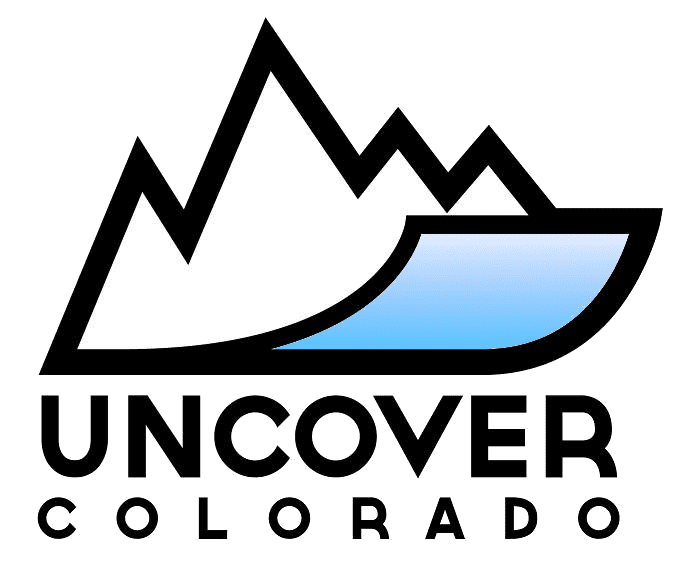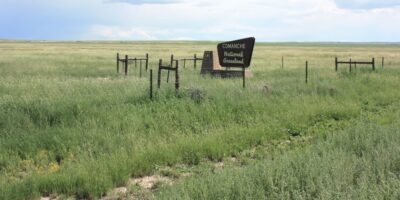Comanche National Grassland encompasses more than 440,000 rural acres in the southeastern plains. Highlights include dinosaur footprints, ancient rock art, abandoned homesteads, and the Sante Fe Trail.
Over 1300 visible tracks in the picturesque Picketwire Canyon make it one of the largest documented dinosaur trackways in North America. The natural beauty of Comanche is another draw, with short grass, rugged canyons, and rolling bluffs. Southeast Colorado brings isolation, so if you’re looking to avoid the crowds, this is a good place for it.
Main Attractions
The grassland is split into two main parts: the Timpas Unit in the northwest (of Comanche National Grassland) and the Carrizo Unit in the southeast along the Oklahoma border. The roads are well-marked and should be good for even low-clearance cars. Remember to bring water and a full tank of gas. The nearest towns to Comanche National Grassland are La Junta and Rocky Ford (for the Timpas Unit) and Springfield (for the Carrizo Unit).
Map of Comanche National Grassland
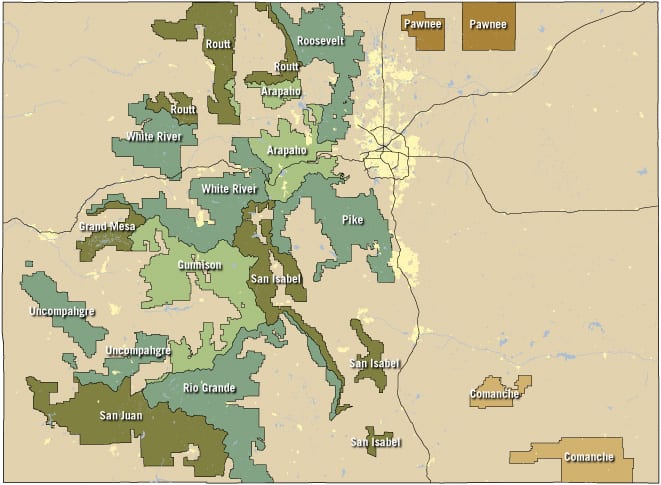 Map of 11 national forests and 2 grasslands.
Map of 11 national forests and 2 grasslands.
Both units of the Comanche National Grassland (Timpas and Carrizo) are run jointly by an office in Pueblo that is also responsible for the Cimarron grasslands, Pike National Forest, and San Isabel National Forest. The local flora is dominated by high plains grasses, alongside the occasional canyon and river, which supports some pine trees, cottonwoods, and smaller vegetation.
Generally gentle with mesas and rolling hills, elevations in the grassland range from 3,200 feet to over 6,200 feet.
History
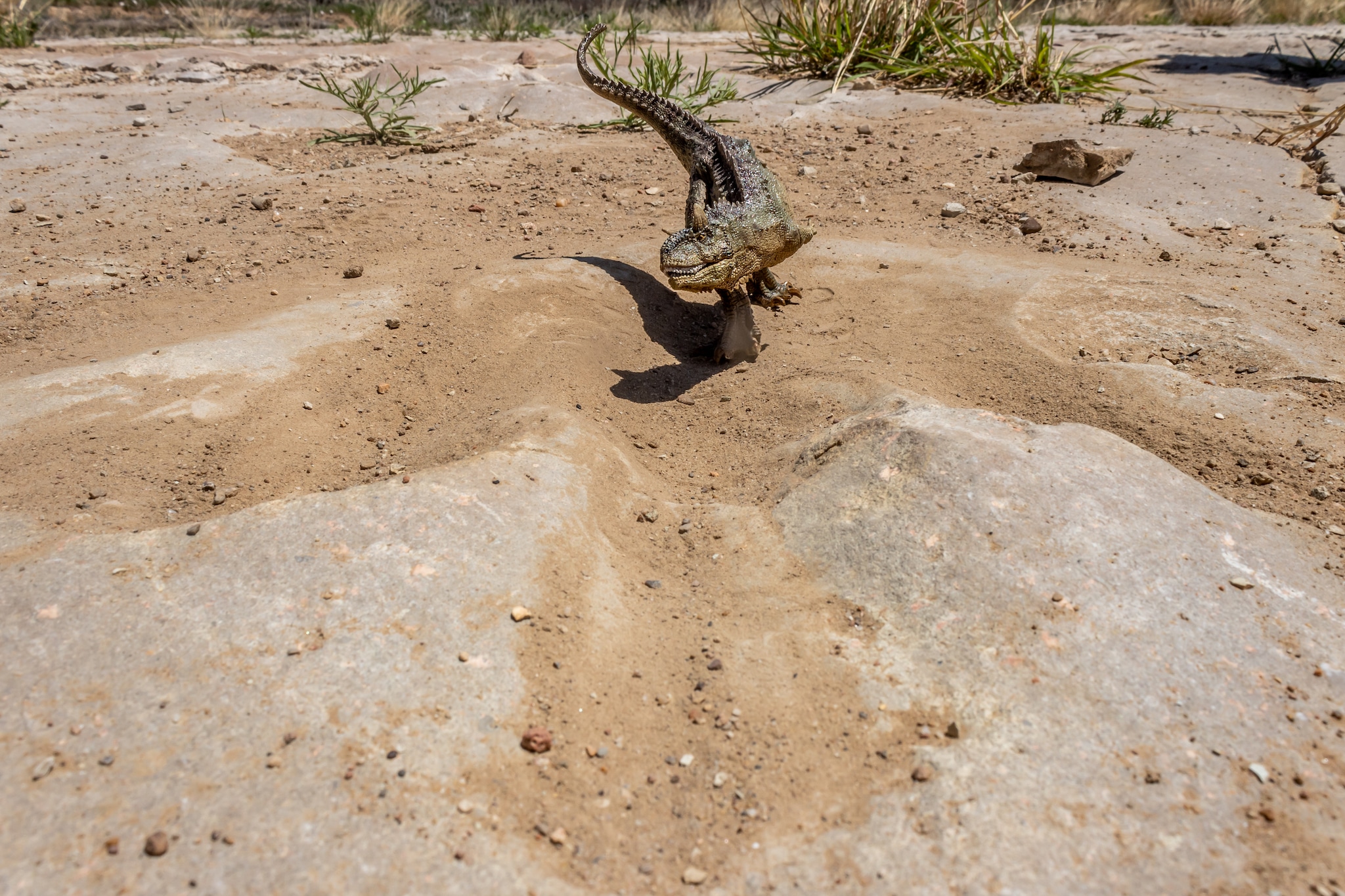
In addition to bountiful recreation opportunities, Comanche National Grassland has a ton of history to share. This part of southeast Colorado was severely affected by the Dust Bowl of the 1930s, and relics from that time are scattered throughout the region.
The Santa Fe National Historic Trail passes through the grassland, which was one of the main thoroughfares for pioneers heading west. The Picket Wire Trail passes numerous sets of Jurassic Age dinosaur tracks, including some from the herbivorous Brontosaurus and the carnivorous Allosaurus.
In places like Picture Canyon and Vogel Canyon, beautiful examples of prehistoric drawings and petroglyphs are on full display. Crack Cave, which is usually closed to the public, opens to guided tours during the equinox in March or September when morning sunlight perfectly hits a set of petroglyphs inside the cave.
Biking/Hiking/Horseback Riding
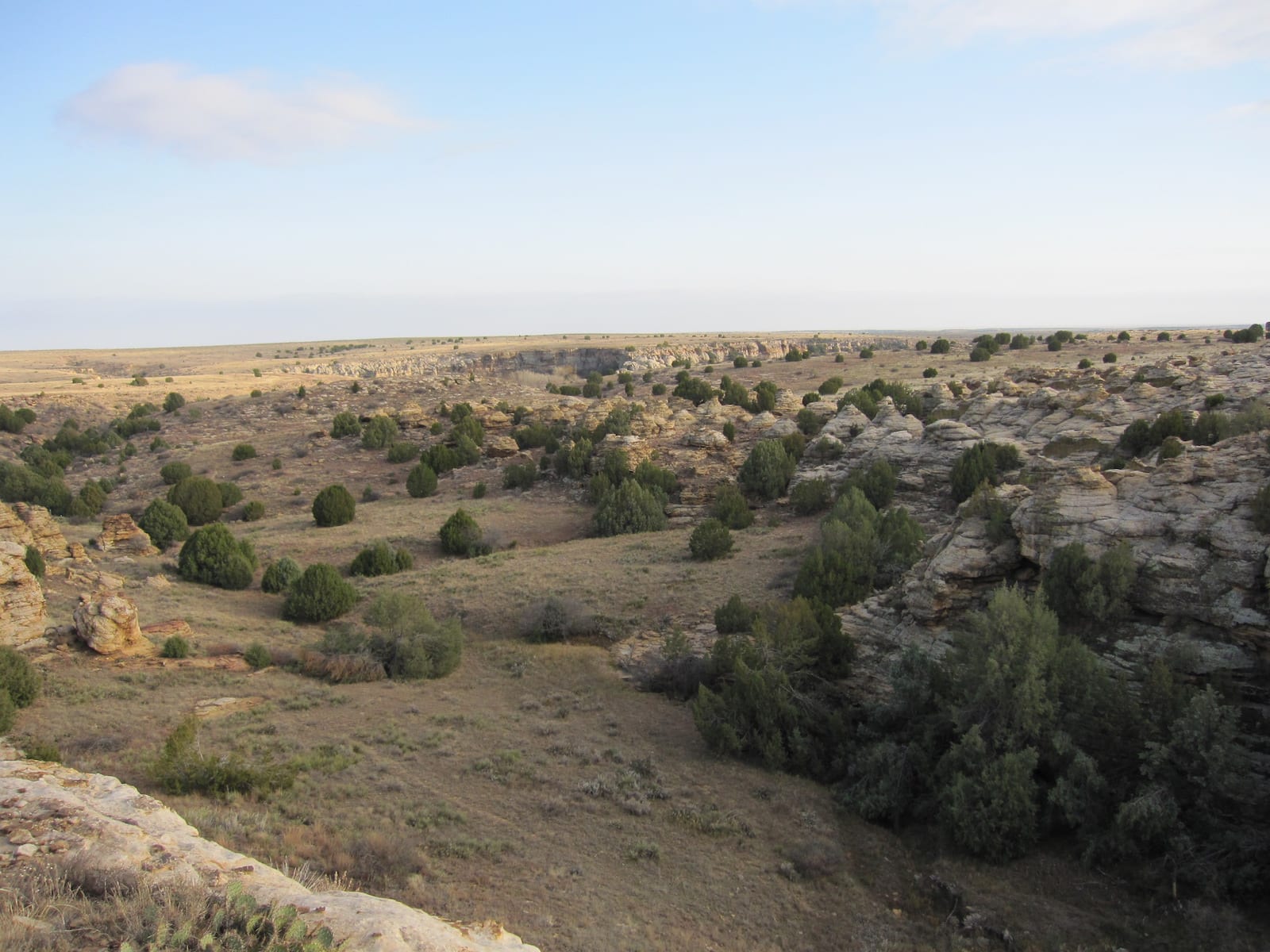
While the overall number of trails in Comanche grasslands is few, many of the highlights are multi-use trails, open to a combination of bikers, hikers, and horseback riders. The most famous area is likely Picketwire Canyon, in the Timpas Unit, which contains an 8.7-mile out-and-back trail along the banks of the Purgatoire River. Along the trail, users can find dinosaur footprints, canyon views, a historic ranch, and an old Spanish mission site.
Vogel Canyon, also in the Timpas Unit, is a nice stroll with an additional canyon and petroglyphs. In the Carizzo Unit, Picture Canyon is a highlight and features rock art, gentle slopes, and easy trail options. Cottonwood Canyon, also in the Carizzo Unit, is listed as one of the best places to bird in Colorado. There’s also the Santa Fe National Historic Trail, a 900-mile odyssey used by many Native American tribes and pioneer settlers; the trail has cultural, historical, and scenic beauty.
Birding
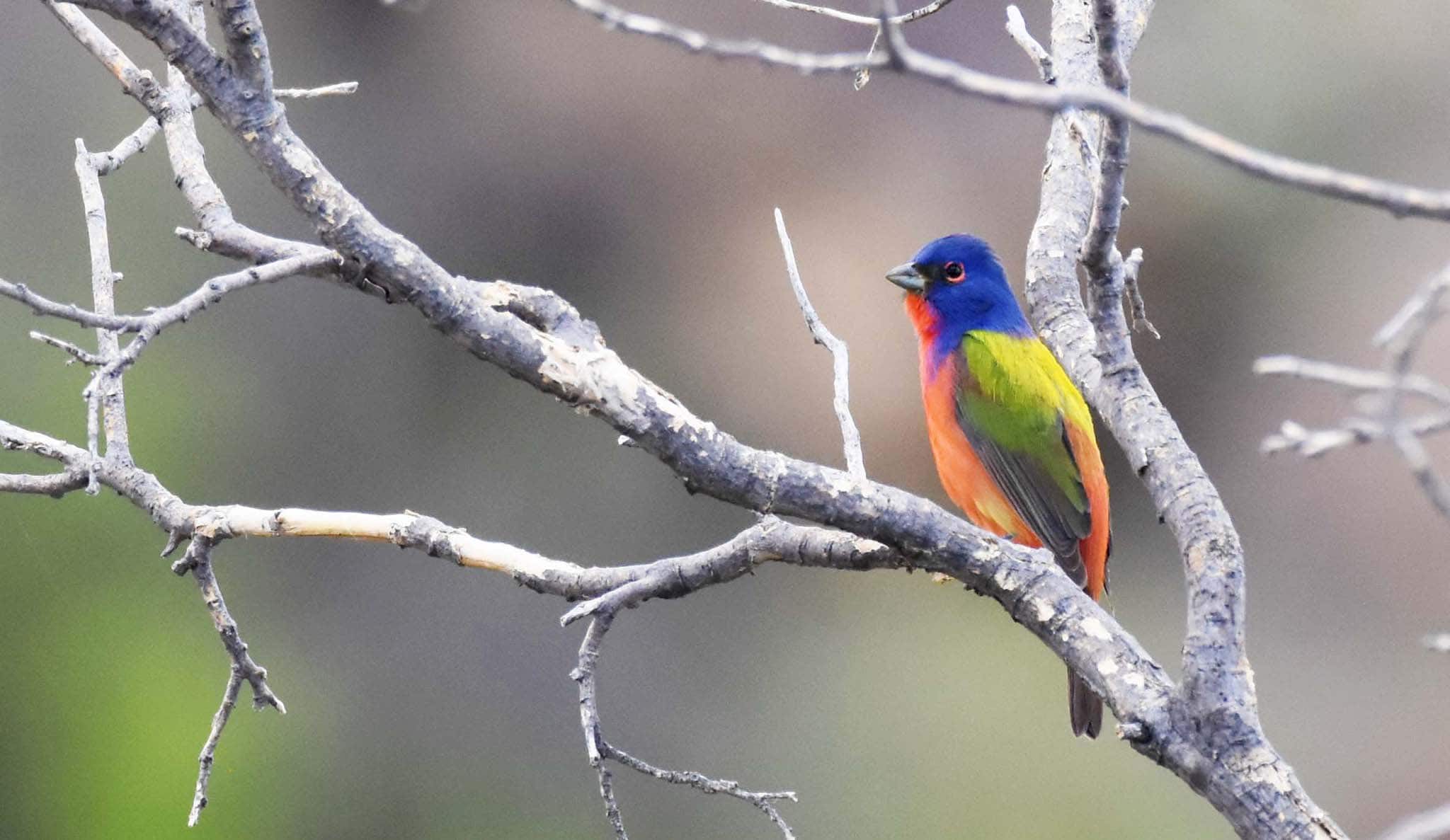
Despite its remote and often desolate appearance, Comanche National Grassland is a birding mecca, with over 235 bird species identified. One of the best places to observe some of the birding glory is Cottonwood Canyon in the Carrizo Unit. Please be respectful of the numerous private property signs in the area when visiting.
Another unique birding opportunity involves the prairie chickens, which are grouse-like birds native to the high plains. While their numbers have been dwindling, there are still opportunities to observe a lek or the ritual mating of the lesser prairie chickens.
Camping
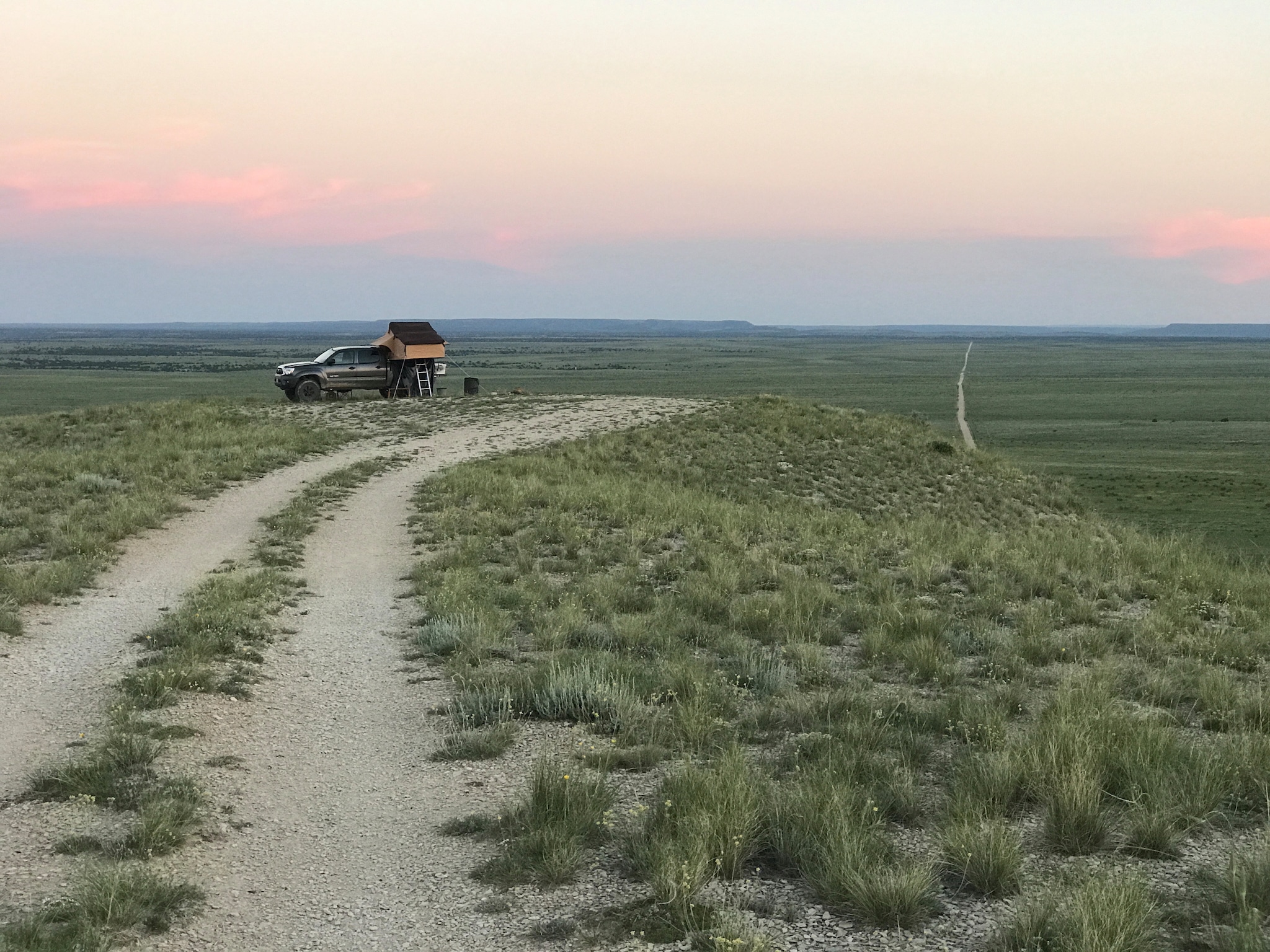
Dispersed camping is permitted everywhere except Picketwire Canyon. Please use preexisting sites and watch out for private property signs. The primitive campsites by Picture Canyon trailhead are probably the most used.
Primitive camping, while free, also requires each party to be vigilant about picking up their trash and doing their best to follow leave-no-trace principles. Due to the lack of overall vegetation, areas of the grasslands are subject to strong summer storms, which can include damaging hail and the threat of flash flooding.
Read about the camping near La Junta and Lamar.
Fishing
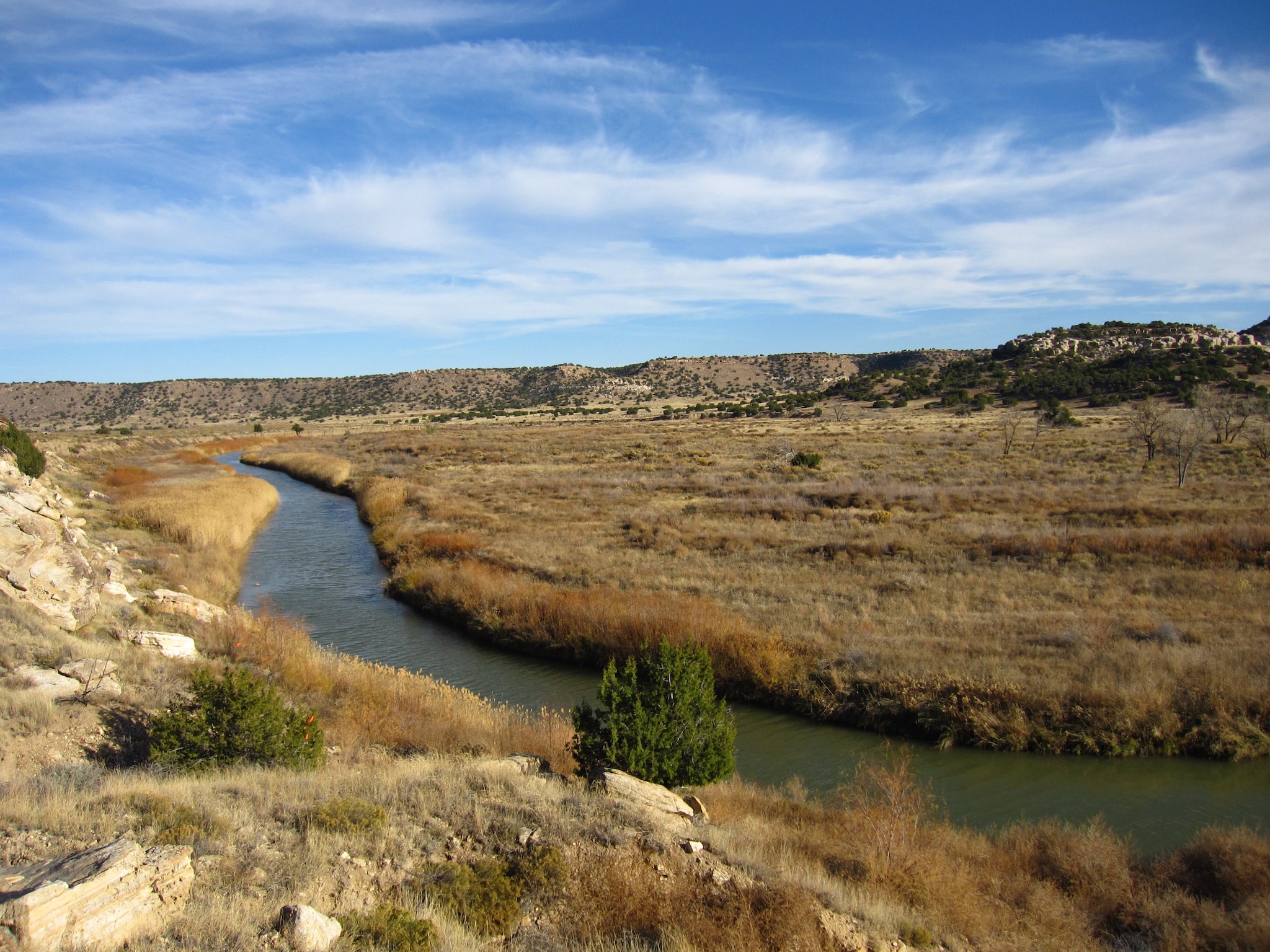
Despite the dry and windswept nature of the High Plains, several important waterways flow through the area. The most notable is the Purgatoire River because it carves out the beautiful Picketwire Canyon and has reliable fish. Carrizo Canyon is another reliable stream fishing option, and both places are home to the Channel catfish. So, technically, you can catfish in Colorado.
Other year-round streams include Timpas Creek, which originates in the southern Sangre De Cristo mountains before flowing through Trinidad and eventually east into the national grassland. There are also quite a few seasonal streams in the area, though fishing on these will yield inconsistent results at best.
Scenic Drives
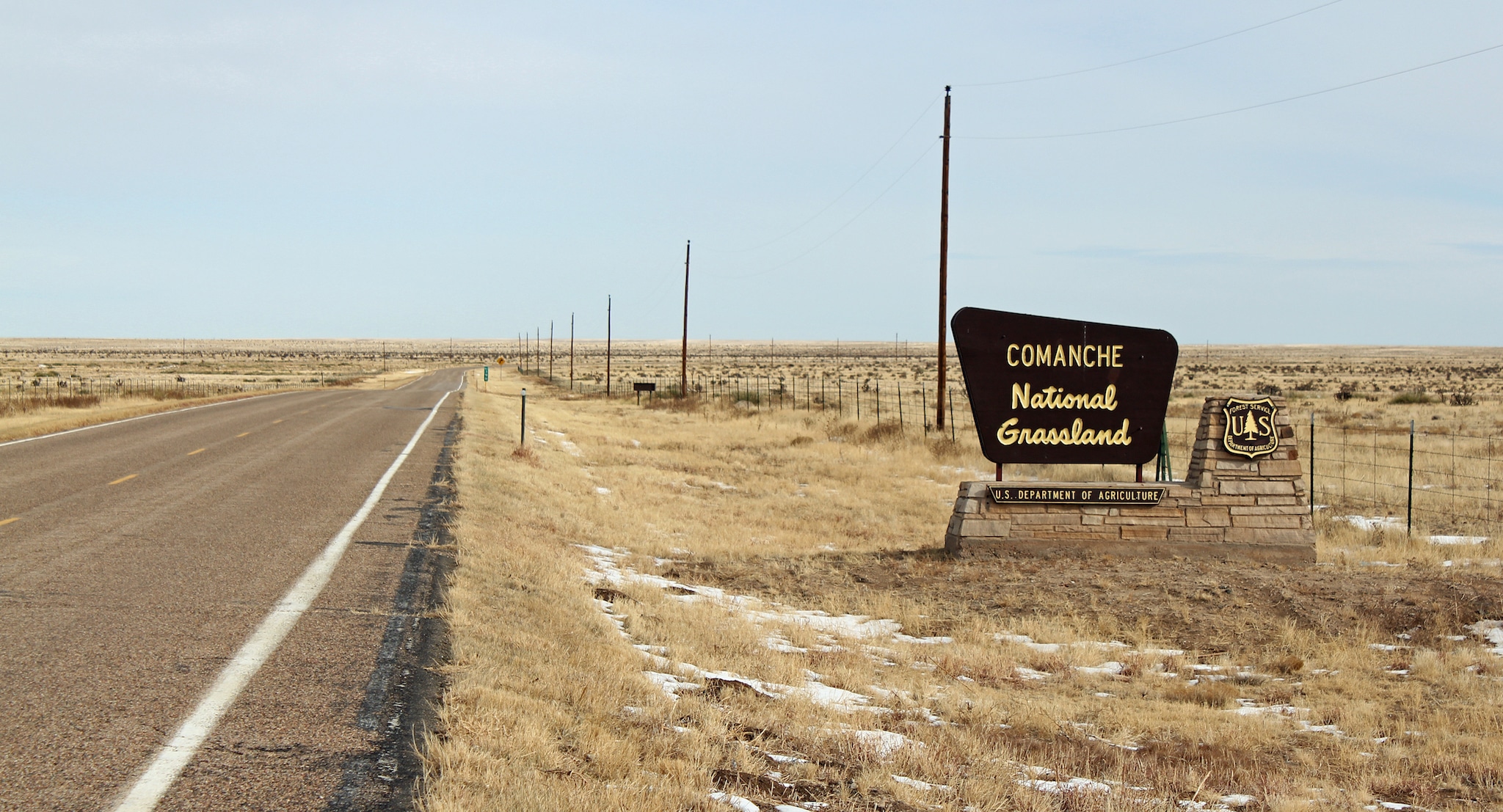
The Santa Fe Trail Byway is the only scenic byway in the area and cuts through the Timpas Unit of the Comanche National Grasslands. US 160 cuts into the Carrizo Unit of the grasslands from east to west and provides access to areas like Carrizo Canyon. US 287 cuts into the Carrizo Unit on a north-south path and offers the best access to Picture Canyon.
Wildlife
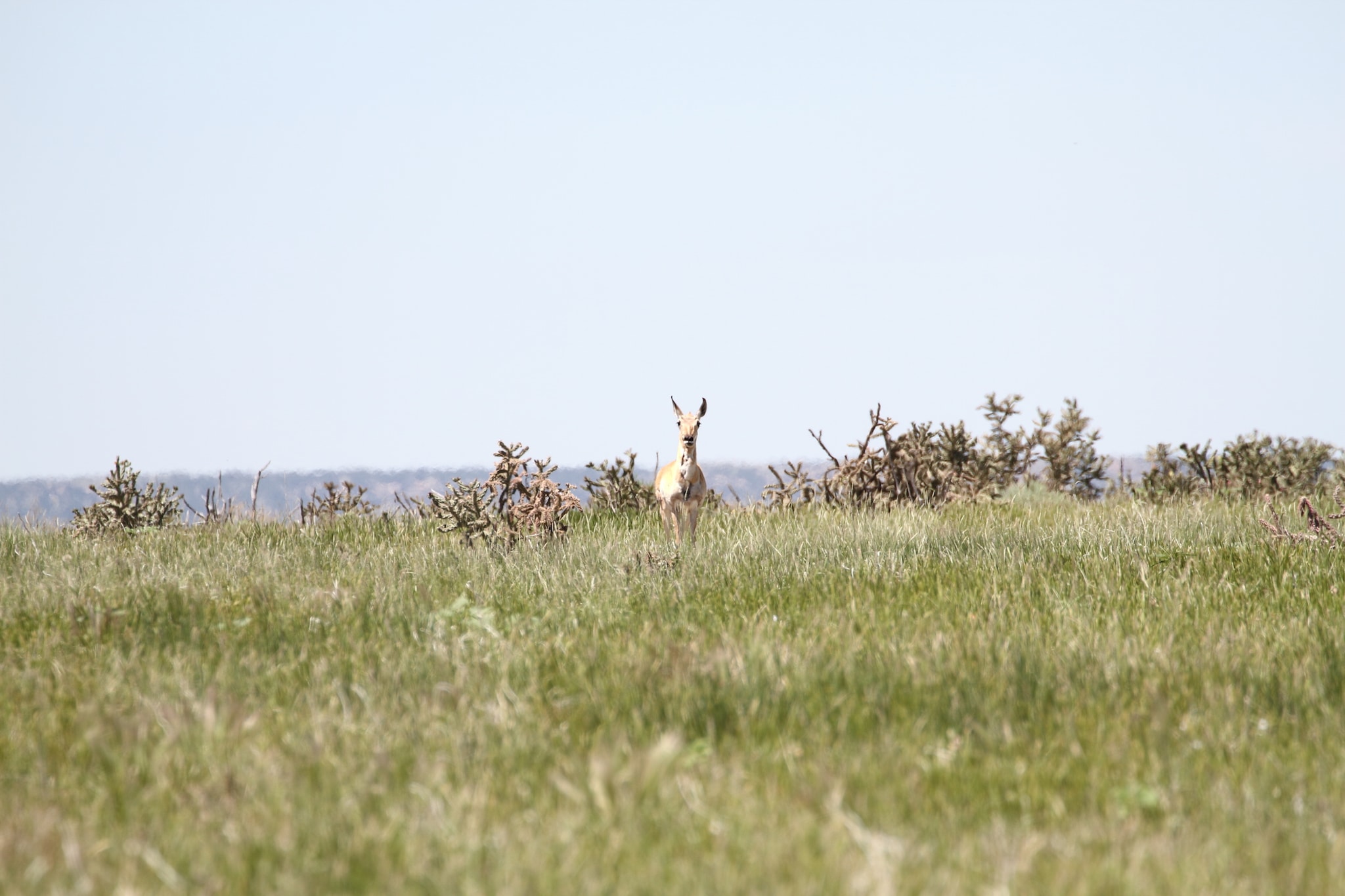
The ecosystem of the high plains has long lagged behind the protections of other public areas in Colorado. The seemingly desolate landscape gives way to beautiful spring flowers, occasional tree groves, and low-lying vegetation. The fauna is particularly diverse with hundreds of bird species, prairie dogs, mule deer, pronghorn antelope, rodents, prairie chickens, and even elk.
Unlike many mountainous areas to the west, this part of Colorado also deals with a few varieties of snakes. The rattlesnake is probably the most well-known due to its telltale rattle, but there are also coral snakes, garter snakes, and long-nosed snakes, among others.
Some of the more interesting regional animals include the roadrunner, made famous by the Wiley Coyote cartoons, burrowing owls, Swift foxes, collared lizards, and the occasional badger.
While not as dramatic as many areas of Colorado, Comanche National Grassland has plenty to celebrate. You can hike through canyons with dinosaur tracks, petroglyphs, and prehistoric drawings, fish on a few meandering rivers, enjoy the bountiful flora and fauna, and you can camp almost anywhere outside of Picketwire Canyon.
Another nearby attraction, Bent’s Old Fort, is worth a visit if you make it to La Junta. John Martin Reservoir, thirty miles east of La Junta, is a good place to camp and enjoy water sports.
For those looking to expand their adventure on the eastern plains, consider venturing north to the Pawnee National Grassland. Located just east of Greeley, this is Colorado’s only other designated national grassland.
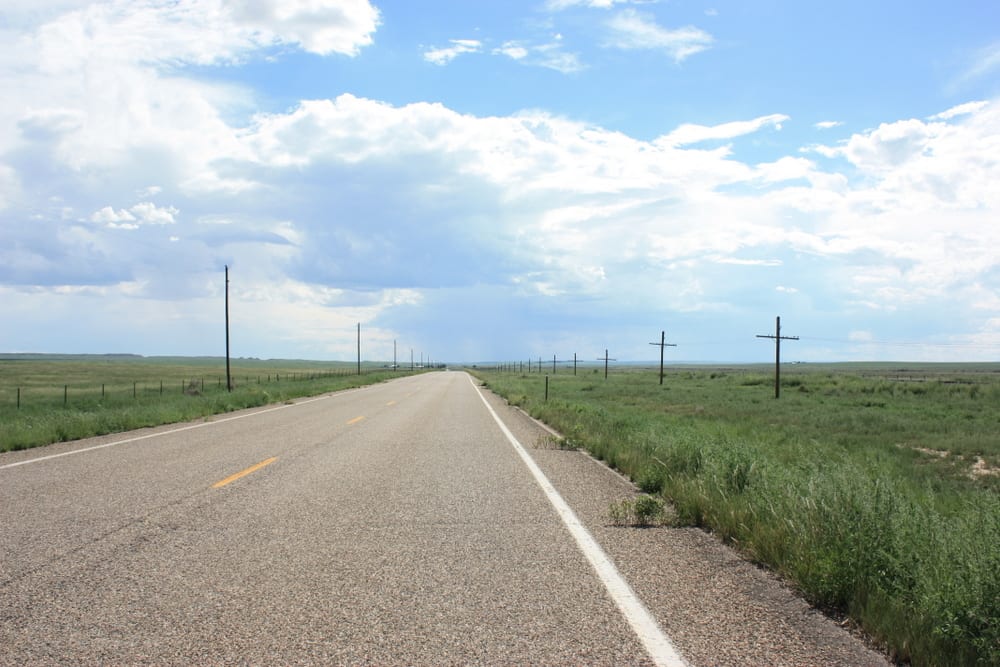
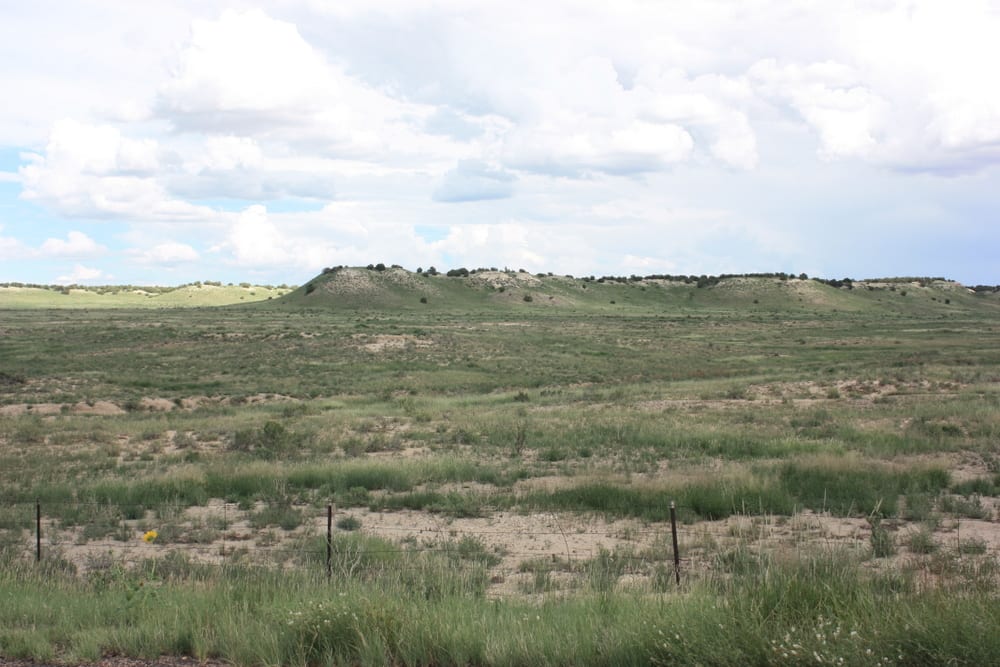
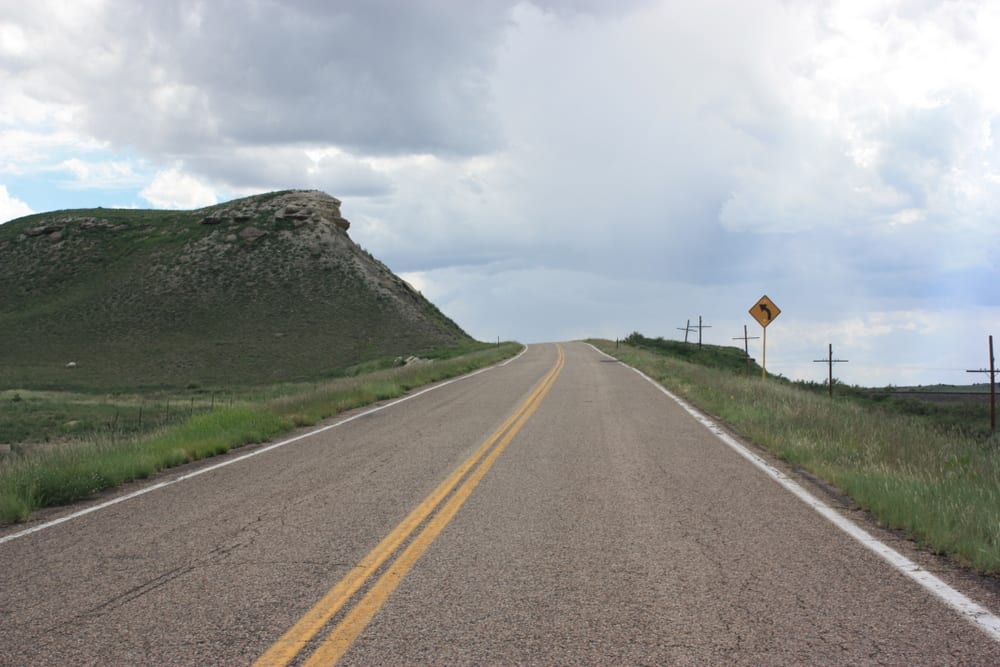
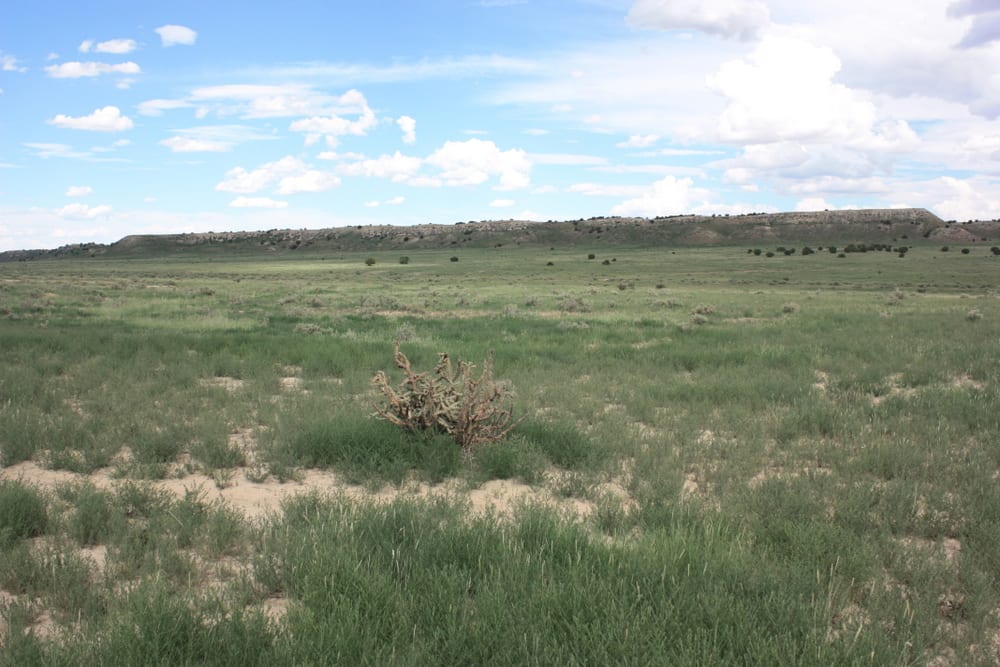
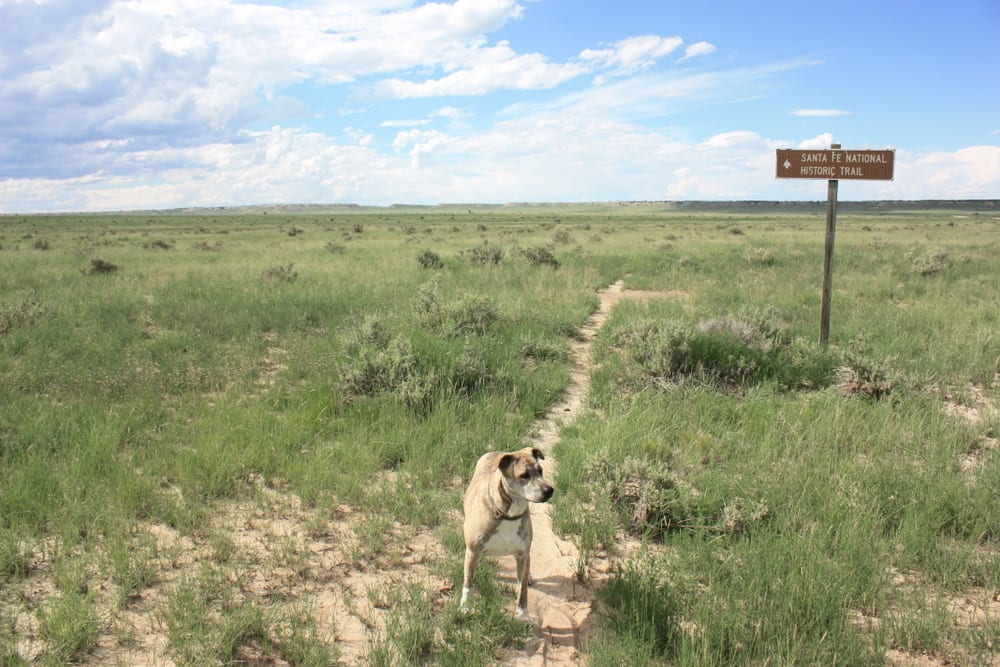
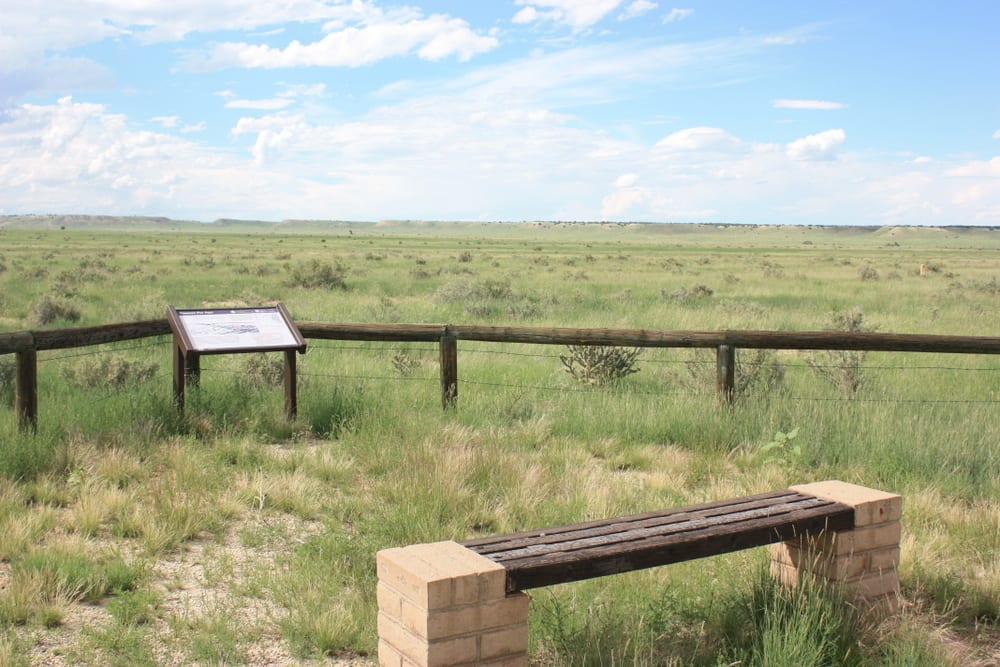
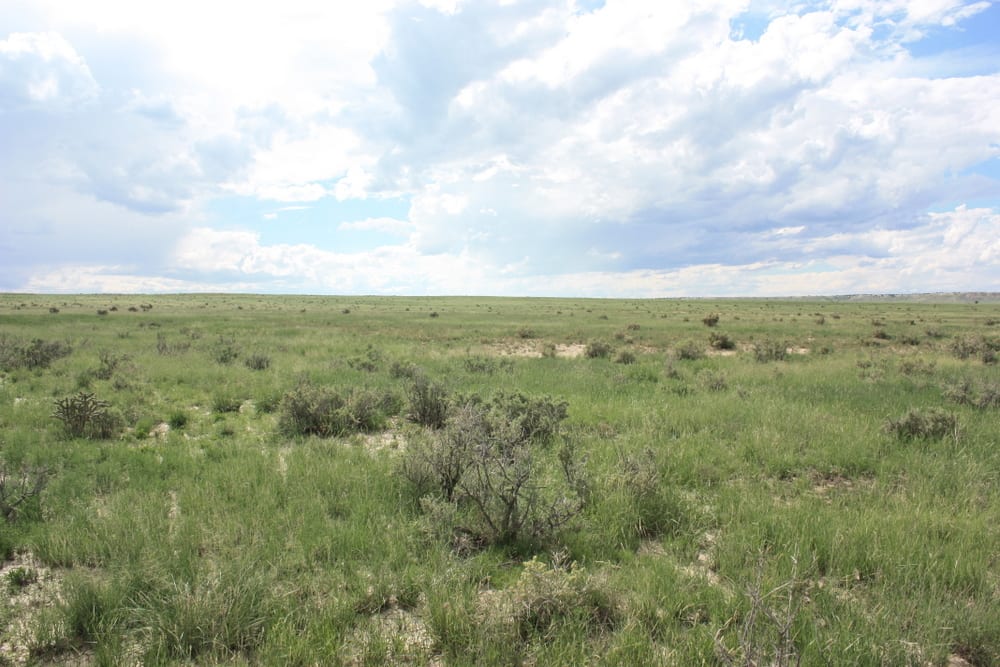
Details
Address: Between La Junta and Trinidad, CO
Phone: 719-523-6591
Season: Year-round | Open daily
Pets: Yes, on a leash
Fees: none
Motor Vehicle Use Maps: Comanche East – La Junta
- Comanche East Inset (PDF) – La Junta
- Comanche West (PDF) – Springfield, Trinidad
Website: fs.usda.gov/detail/psicc/about-forest/districts/?cid=fsm9_032695
